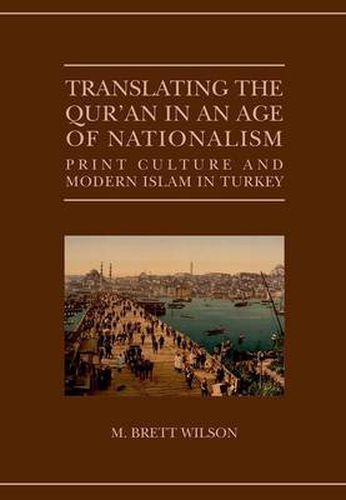Readings Newsletter
Become a Readings Member to make your shopping experience even easier.
Sign in or sign up for free!
You’re not far away from qualifying for FREE standard shipping within Australia
You’ve qualified for FREE standard shipping within Australia
The cart is loading…






Over the course of the past two centuries, the central text of Islam has undergone twin revolutions. Around the globe, Muslim communities have embraced the printing and translating of the Qur'an, transforming the scribal text into a modern book that can be read in virtually any language. What began with the sparse and often contentious publication of vernacular commentaries and translations in South Asia and the Ottoman Empire evolved, by the late twentieth century, into widespread Qur'anic translation and publishing efforts in all quarters of the Muslim world, including Arabic speaking countries such as Egypt and Saudi Arabia. This is remarkable given that at the dawn of the twentieth century many Muslims considered Qur'an translations to be impermissible and unviable. Nevertheless, printed and translated versions of the Qur'an have gained widespread acceptance by Muslim communities, and now play a central, and in some quarters, a leading role in how the Qur'an is read and understood in the modern world. Focusing on the Ottoman Empire and Turkey, and following the debates to Russia, Egypt, Indonesia, and India, this book tries to answer the question of how this revolution in Qur'anic book culture occurred, considering both intellectual history as well the processes by which the Qur'an became a modern book that could be mechanically reproduced and widely owned.
$9.00 standard shipping within Australia
FREE standard shipping within Australia for orders over $100.00
Express & International shipping calculated at checkout
Over the course of the past two centuries, the central text of Islam has undergone twin revolutions. Around the globe, Muslim communities have embraced the printing and translating of the Qur'an, transforming the scribal text into a modern book that can be read in virtually any language. What began with the sparse and often contentious publication of vernacular commentaries and translations in South Asia and the Ottoman Empire evolved, by the late twentieth century, into widespread Qur'anic translation and publishing efforts in all quarters of the Muslim world, including Arabic speaking countries such as Egypt and Saudi Arabia. This is remarkable given that at the dawn of the twentieth century many Muslims considered Qur'an translations to be impermissible and unviable. Nevertheless, printed and translated versions of the Qur'an have gained widespread acceptance by Muslim communities, and now play a central, and in some quarters, a leading role in how the Qur'an is read and understood in the modern world. Focusing on the Ottoman Empire and Turkey, and following the debates to Russia, Egypt, Indonesia, and India, this book tries to answer the question of how this revolution in Qur'anic book culture occurred, considering both intellectual history as well the processes by which the Qur'an became a modern book that could be mechanically reproduced and widely owned.